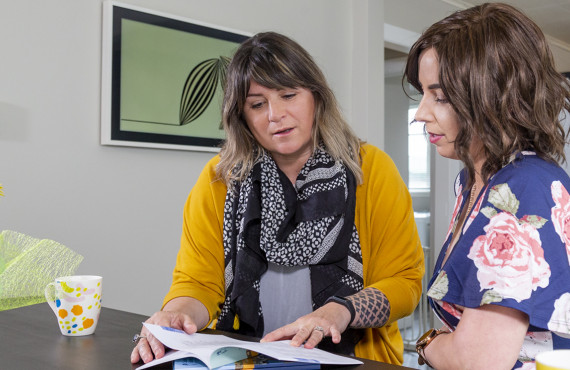The treatment offered will depend on the type and stage of eye melanoma, as well as your general health and eyesight.
How is eye melanoma treated?
Eye melanoma can be treated with:
- radiation treatment
- surgery
- transpupillary thermotherapy (TTT)
- cryotherapy
- chemotherapy eye drops
- photodynamic therapy (PDT)
Before any treatment begins, make sure that you have discussed and understood your treatment team's advice. You may ask for a second opinion if you want one.
Radiation for eye melanoma
Radiation treatment is the use of radiation high energy beams to destroy cancer cells or slow their growth.
External radiation
For uveal melanoma, you may have a specific form of external radiation treatment called stereotactic radiation. This may be the only treatment you need, or it may be given with other treatments.
Internal radiation
Internal radiation, also called brachytherapy, is when a radiation source is placed into the body close to the cancer.
A small radioactive disc is placed over the melanoma in the eye during an operation. The disc stays in place for about four days until the total dose of radiation has been given.
Surgery for eye melanoma
The type of surgery you have depends on the size and position of the melanoma in your eye. It may involve just the melanoma, a small part of the eye, or sometimes the whole eye.
For conjunctival melanoma, surgery is used to remove the tumour from the surface of the eye.
For uveal melanoma, if the cancer is large or in a difficult position, sometimes you will need a larger operation to remove your eye and nearby tissue.
The removal of your eye (enucleation) is not common, and the surgeon will always try to preserve your eye. If you have this surgery, you may have a false eye (prosthesis) made.
Any type of surgery can be frightening.
Other treatments for eye melanoma
Other treatments may be used to prevent the cancer from returning. This includes:
Transpupillary thermotherapy (TTT)
Under local anaesthetic a laser beam is used to destroy the cancer cells by heating them.
Cryotherapy
The area is frozen to kill any cancer cells left following surgery.
Chemotherapy eye drops
Topical cytotoxic eye drops maybe be given for conjunctival melanoma to destroy the cancer cells.
Photodynamic therapy (PDT)
Most commonly used to treat cancers that have spread to the eye, or some non-cancerous eye conditions. The treatment uses a laser combined with a light-sensitive drug to destroy cancer cells.
Palliative care
Palliative care aims to improve your quality of life. It is not just about end of life care.
Palliative care will help:
- you to enjoy the best quality of life you can for as long as possible
- make sure that your physical, practical, emotional and spiritual needs are looked after as well as possible
- manage symptoms of your cancer
- manage side effects of treatment
- help you to feel in control of your situation
- make your time as positive as it can be for you and your family/whānau
Speak with your treatment team about palliative care options for you and your family/whānau.
Using complementary or traditional healing
Sometimes people with cancer might think about using complementary therapies or traditional healing.
Some alternative, complementary and traditional healing methods may react with the treatment you receive and cause harmful side-effects.
It is important to talk to your treatment team about any other therapies you’re using or thinking about because they may interfere with hospital treatment.
Life after cancer treatment
After you finish treatment for cancer, give yourself time to adjust to the physical and emotional changes. We are still here to support you after your treatment finishes.
You will need regular check-ups with your treatment team. These may include some blood tests or physical examinations. Speak with your treatment team about the plan for you.

Help with making tough decisions about what treatment you will have.

How to manage the symptoms of cancer and the side effects of treatment.

We are here to help and support you and your whānau through cancer diagnosis, treatment and recovery…

It's common for people to feel excited and anxious when treatment finishes.
We know that going through cancer is tough and can raise many questions. You are not alone.
We have health professionals to answer your questions and provide the support you need.
Get in touch
